Disclaimer: This is a re-edited version of the original article posted on MyDramaList.com on the 5th of May, 2019. This version includes corrected linguistic errors, updated links, changed pictures, and a new passage on Godzilla: King of the Monsters (2019).
[Note:
For clarity’s sake, I mostly use the English transliterated form
Godzilla throughout this article, but I also refer to original Gojira
when the context requires it.]Gojira [ゴジラ], also known as the Big G, the God of Destruction, and the King of the Monsters, is a radioactive creature of biblical proportions who stomped his way into the Japanese cinema and became a worldwide pop-cultural icon. Many viewers love him, but also many regard him as campy. However, undeniable is the fact that, over the course of 65 years, there have been 32 feature films (including 3 Hollywood productions), an animated trilogy, two cartoon shows, and countless novels, comic books as well as video games. Godzilla is nowadays both a kaiju superstar in his own right and a profitable commodity for his owner, the Toho Studios. My attempt is to outline the history behind the cinematic monster and his impressively rich legacy.
My first introduction to Godzilla was back in 1998. Don’t worry, it was not like the Emmerich version became the first Godzilla flick I have ever seen. There was a lot of marketing buzz about this Hollywood blockbuster, but I was completely uninterested in it. All of a sudden, a Polish movie magazine fell into my 6-year-old hands which contained even more hype urging readers to see the American remake. However, there was also an article which provided an overview of the original 22 movies from the Showa and the Heisei series in form of chronologically organized titles with brief descriptions, posters, and monsters. That text became my guide list to Godzilla movies in the pre-internet era. After reading it, I was determined to see every single film listed there and I eventually fulfilled my resolution. The very first Godzilla movie I had the pleasure to see was Godzilla vs. King Ghidorah and to date, it remains my all-time favourite. So, without further delay, let’s get into the nitty-gritty of Japan’s favourite monster.
Character Overview
- Age: Unknown
- Height: 50 to 118 meters/164 to 387 feet (depending on a movie)
- Special powers: Atomic heat beam, extreme resistance to firepower
- Species: Prehistoric amphibious reptile (Predecessor: Godzillasaurus)
- Offspring: Minilla (Showa), Godzilla Junior (Heisei)
Origins
Contrary
to many misconceptions, Godzilla had a very meaningful beginning. He
started off as an allegory of nuclear holocaust and World War II trauma.
Japan was brought onto its knees after the bombing of Hiroshima and
Nagasaki in 1945. Then, the American occupation ensued which lasted up
until 1952. Throughout this period, Japanese filmmakers were forbidden
from acknowledging in any way the war and its atrocities. Nevertheless,
the public controversy was ignited in 1954 when, as a result of a
hydrogen bomb test performed at Bikini Atoll, 23 Japanese fishermen of
Daigo Fukuryu Maru tuna fishing boat were exposed to radioactive ash.
The event reminded Japan that the atomic weapon was still a tangible
threat, but it also inspired producer Tomoyuki Tanaka to make a movie
about a monster emerging from the sea depths as a side effect of nuclear
testing.
However, the nuclear test was not the only influence. With
the 1952 re-release of King Kong (1933) and the 1953 premiere of The
Beast from 20,000 Fathoms, Tanaka saw the potential for a monster film
made in Japan. Having obtained a green light from Toho, he brought on
board director Ishiro Honda, former Akira Kurosawa’s collaborator, and
Eiji Tsuburaya, the mastermind of Japanese special effects. The three
created the story and its destructive creature: Gojira, a combination of
words gorira [ゴリラ, gorilla] and kujira [クジラ, whale] serving to indicate
the monster’s power and might. His appearance was devised by art
director Akira Watanabe who blended attributes of various dinosaurs and
combined them with scaly, charcoal skin, anthropomorphic torso, dorsal
fins on the back, and a long tail. Godzilla’s famous roar, in turn, was
invented by legendary Akira Ifukube (the official composer of 11
Godzilla movies) who rubbed the strings of the double bass with a coarse
leather glove and played the recording back at a reduced speed. Talk
about ingenuity in the 1950s!
The First Movie
The original Gojira
movie hit the screens on November 3, 1954. It was the most expensive
Japanese production at that time (even surpassing the oversized budget
of Kurosawa’s Seven Samurai from the same year) and it became an instant
box office success. It has to be noted, however, that the first film
did not establish the conventional formula of spectacular monster
fights, army counterattacks, and invasions from outer space. The
original movie provides a very bleak and harrowing cinematic experience.
Images of utter destruction: Tokyo in flames, people suffering from
radiation, and dead bodies made the Japanese recall their wartime
trauma. Perhaps the most gutting image in the whole picture is that of a
crying mother who, while clutching her children in the midst of
explosions, says that they will soon join their father.
What is more
interesting, Godzilla is presented neither as an enemy nor as a symbol
of hate. As the story progresses, human characters perceive him as a
force of destiny, a metaphorical incarnation of Japanese arrogance who
takes revenge on civilization. In accordance with Ishiro Honda’s vision,
Godzilla was to behave like a living nuclear bomb, radiating as well as
torching everything and everyone on his way. As Tomoyuki Tanaka stated:
“Mankind had created the Bomb, and now nature was going to take revenge
on mankind” (source).
Surprisingly, the American audiences were not able to see the full, uncut version of the movie until 2004. Gojira was re-released in 1956 under the title Godzilla, King of the Monsters! (yes, the same name as the 2019 production). Most of the footage was reshot in order to incorporate journalist Steve Martin (played by Raymond Burr) as the lead character. While visibly weaker in comparison to the original, I find this version very watchable as well and it is worth checking out as a trivia.
Surprisingly, the American audiences were not able to see the full, uncut version of the movie until 2004. Gojira was re-released in 1956 under the title Godzilla, King of the Monsters! (yes, the same name as the 2019 production). Most of the footage was reshot in order to incorporate journalist Steve Martin (played by Raymond Burr) as the lead character. While visibly weaker in comparison to the original, I find this version very watchable as well and it is worth checking out as a trivia.
Special Effects
Of course, the
impact of Gojira would not be possible if it had not been for the
special effects department. Originally, Godzilla was supposed to be shot
using the stop motion approach as in the case of King Kong, but time
constraints (only two months to make the picture) forced Eiji Tsuburaya
to come up with the suitmation technique. It involves a man in a monster
suit placed within a carefully crafted miniature set and shot at an
appropriate frame rate (sometimes quicker or slower depending on the
shot). Many modern “critics” look upon this approach as outdated and
embarrassing, but they need to realize how ingenious and efficient it
was. Without it, we would not get 28 Godzilla movies.
Nevertheless,
if you think that suitmation was a piece of cake, then you could not be
more wrong. Haruo Nakajima, Kenpachiro Satsuma, and Tsutomu Kitagawa are
the most prominent actors who “played” Godzilla throughout the Showa,
Heisei, and Millennium series respectively and they all suffered through
a fair share of discomfort and pain. The suits were extremely heavy (up
to 100 kg/220 lb) and hot. The actors experienced such things as oxygen
deprivation, near-drowning, concussions, lacerations, and electric
shocks. In addition, each suit had to be made from scratch for a new
movie. As with regard to the sets, the miniatures had to be destroyed on
cue, which not always happened and resulted in the crew relentlessly
“rebuilding” the miniatures after hours.
Special effects changed and improved as time went by, but Tsuburaya’s technique remained largely unchanged. In fact, it was utilized on television in many Tokusatsu shows (Ultraman, Kamen Rider, Super Sentai). In the 1990s, the Heisei movies combined miniatures with cell compositing effects and digital graphics, whereas the Millennium era, in the 2000s, began blending CGI into the fights. Forgive me this subsection, but I felt I had to mention and give justice to people who made Godzilla seem real on film. Just check out their devotion even in recent years.
Special effects changed and improved as time went by, but Tsuburaya’s technique remained largely unchanged. In fact, it was utilized on television in many Tokusatsu shows (Ultraman, Kamen Rider, Super Sentai). In the 1990s, the Heisei movies combined miniatures with cell compositing effects and digital graphics, whereas the Millennium era, in the 2000s, began blending CGI into the fights. Forgive me this subsection, but I felt I had to mention and give justice to people who made Godzilla seem real on film. Just check out their devotion even in recent years.
Evidently,
Godzilla would be nothing without thespians whom he can trample on. A
variety of actors and actresses graced the screen alongside Godzilla
including such veterans as Akira Takarada, Momoko Kochi, Akihiko Hirata,
Takashi Shimura, Kumi Mizuno, Yoshio Tsuchiya, Koichi Ueda, Masato Ibu,
and Akira Nakao. All of them appeared in more than one movie, having
played various roles, but an absolute record-breaker is Megumi Odaka who
played the character of Miki Saegusa in six Godzilla movies. (Please,
Toho/Warner Bros. give her a guest role in new films already!)
The
success of the first movie immediately led to the production of a
sequel, Godzilla Raids Again, in which he was pitted against the first
antagonist, Anguirus. Though commercially successful, Toho did not pitch
another follow-up idea for seven years. The year 1962 saw the release
of King Kong vs. Godzilla which became an even greater success and set
the tone for the rest of the Showa Series. With the advent of colour
film, the style was no longer depressing, references to the war were
scrapped, and the socio-political commentary got replaced by a
light-hearted plot and monster battles. In the fourth movie, Godzilla
had to fight against another Toho star, Mothra; and by the fifth
picture, Ghidorah, the Three-Headed Monster, the Big G was presented as a
friendly anti-hero who had to defeat a new badass in town.
Godzilla’s
transformation into a positive superhero was laid out in three
subsequent productions: Invasion of the Astro-Monster, Ebirah, Horror of
the Deep, and Son of Godzilla. In spite of turning Godzilla into a
children’s hero, the films did manage to provide some social commentary.
For example, Godzilla vs. Hedorah raises the issue of Earth’s
pollution, whereas Godzilla vs. Mechagodzilla expresses clearly
anti-American undertones. Yet, Godzilla also did such crazy stuff as
wrestling jumps, talking or even flying… In the mid-1970s, the economic
situation started to change in Japan. Godzilla was present on the silver
screen for 20 years already and the demand for new adventures simply
began trickling away. After 14 sequels, the series ended with Terror of
Mechagodzilla in 1975.
Heisei Series
Toho was very keen on
bringing back the King of the Monsters and they eventually achieved that
in 1984 with The Return of Godzilla (original title: Gojira (1984)).
The movie rebooted the franchise by ignoring all of the Showa films
apart from the original Gojira. The monster grew to 80 meters and became
more menacing in its appearance. Although The Return turned into a
welcomed success, Toho had no idea how to carry the story further. Thus,
they held a public contest and selected a script which became the basis
of Godzilla vs. Biollante. This installment turned into a fans’
favourite over the years, but it was not as successful as anticipated.
Toho’s
60th anniversary in 1992 provided the opportunity for another entry in
the series. Godzilla vs. King Ghidorah brought back the Big G’s
archenemy after two decades of absence. In addition, the movie gave us Godzilla’s background story as well as Mecha-King Ghidorah(!)
Consequently, King of the Monsters was pitted against good old foes in
Godzilla vs. Mothra and Godzilla vs. Mechagodzilla II. Toho intended to
end the franchise at this point but delays with the announced American
version allowed them to produce two more pictures: Godzilla vs.
SpaceGodzilla (40th-anniversary film) and Godzilla vs. Destoroyah.
Personally, this is my favourite Godzilla series and I find it to be secretly genius. It has awesome monsters, great special effects, and brilliant music scores. The movies are closely knit together, showing a clear progression of Godzilla from a misunderstood monster to a ruthless destroyer to a loving father. Additionally, the ending of this series made me cry as much as I cried while watching The Lion King all over again (but ten times more heartbreaking!: *spoiler clip*).
Personally, this is my favourite Godzilla series and I find it to be secretly genius. It has awesome monsters, great special effects, and brilliant music scores. The movies are closely knit together, showing a clear progression of Godzilla from a misunderstood monster to a ruthless destroyer to a loving father. Additionally, the ending of this series made me cry as much as I cried while watching The Lion King all over again (but ten times more heartbreaking!: *spoiler clip*).
Millennium Series
After
the premiere of the abysmal Hollywood reimagining of Godzilla in 1998
(“That’s a lot of fish”), the fans raged across the globe and Toho
management gave the green light to a new film that was supposed to save
the King’s reputation. The result of this was Godzilla 2000: Millennium which,
similarly to The Return of Godzilla, ignored everything but the original
Gojira. The producers must have taken a liking to this approach because
almost every entry of the Millennium Series is a reboot happening in an
alternate timeline and ignoring everything that occurred earlier. The
notable exception is Godzilla X Mechagodzilla and Godzilla X Mothra X
Mechagodzilla: Tokyo S.O.S which constitute a two-part story that
references the Showa era. These two are definite highlights and my
favourite entries of this series. Though, many fans point to Godzilla,
Mothra and King Ghidorah: Giant Monsters All-Out Attack as the best
picture of this era. The 50th-anniversary film, Godzilla: Final Wars,
came out in 2004 to a mixed reception (I only liked parts of it).
Legendary Series (a.k.a. MonsterVerse)
Ten
long years have gone by since Godzilla’s retirement, but he gloriously
returned yet again in another Hollywood’s reinterpretation. Godzilla
(2014) directed by Gareth Edwards pays a lot more focus and respect to
the source material than the 1998 flick. The King is Japanese, its 1954
origins are referenced, and there are monster fights. I enjoyed every
minute of this film when I saw it on the big screen, so it is really
hard for me to comprehend all the bad rap this movie gets for not having
enough of Godzilla in it. This was a very good introduction into a
larger story that Legendary Entertainment is currently developing.
Speaking
of which, Godzilla: King of the Monsters (2019) won me over! It was a
breathtaking experience seeing this film in cinema. Indeed, it may have a
generic human drama and a couple of cheesy one-liners, but the action,
pathos, and the monsters are amazing! Hollywood is finally going down
the right path laid out by Toho decades ago. Godzilla vs. Kong (2021),
you’d better be good!
Shin Series
Following the enormous success
of Godzilla (2014), it became evident that Toho also wanted a piece of
the action. Being bound by the deal with Legendary, Toho cannot release a
Godzilla flick in the same year as Legendary’s prospective productions.
Hence, they gave director Hideaki Anno a very narrow time window
(summer 2016) to make a new movie. The result of this expensive and
hasty production is Shin Gojira (a.k.a. Godzilla Resurgence), a new take
on Godzilla’s monstrosity that ignores even the 1954 picture.
The movie became a huge hit at the Japanese box office and received wide critical acclaim. Godzilla’s unique appearance and powers might have been the main visual advantages, but the movie is unconventional in other ways as well. Steve Ryfle describes it in the following manner: “It’s not truly a monster or disaster movie at all, but a faux-documentary look at politicians and bureaucrats responding to a doomsday scenario, with all of the deadlocked meeting, endless discussion, conference calls and staring at computer screens […] What the film eschews in personal emotion, however, it replaces with a sense of national pride, embodied not by the bumbling, indecisive, pass-the-buck, old-school politicians […] but by younger, patriotic and clear-headed generation that leads the country out of the mess” (source). In other words, Shin Gojira turns into an ideological manifesto in the wake of post-Fukushima Japan. While I appreciated the risks the film took and a new direction of the story, it did not make a lasting impression on me. Call me an old-fashioned viewer, but I go with J-Taro Sugisaku’s claim that the primary reason behind Shin Gojira’s popularity was the presence of Satomi Ishihara as the female lead…
The movie became a huge hit at the Japanese box office and received wide critical acclaim. Godzilla’s unique appearance and powers might have been the main visual advantages, but the movie is unconventional in other ways as well. Steve Ryfle describes it in the following manner: “It’s not truly a monster or disaster movie at all, but a faux-documentary look at politicians and bureaucrats responding to a doomsday scenario, with all of the deadlocked meeting, endless discussion, conference calls and staring at computer screens […] What the film eschews in personal emotion, however, it replaces with a sense of national pride, embodied not by the bumbling, indecisive, pass-the-buck, old-school politicians […] but by younger, patriotic and clear-headed generation that leads the country out of the mess” (source). In other words, Shin Gojira turns into an ideological manifesto in the wake of post-Fukushima Japan. While I appreciated the risks the film took and a new direction of the story, it did not make a lasting impression on me. Call me an old-fashioned viewer, but I go with J-Taro Sugisaku’s claim that the primary reason behind Shin Gojira’s popularity was the presence of Satomi Ishihara as the female lead…
In
between 2017 and 2018, Toho released together with Polygon Pictures a
trilogy of animated Godzilla films: Godzilla: Planet of the Monsters,
Godzilla: City on the Edge of Battle, Godzilla: The Planet Eater.
Although the fandom generally disliked the trilogy for not including
monster fights, I think that the anime provides a very interesting
what-if scenario for Godzilla, grounding it deeper within the sci-fi
convention. In addition, this series gave us, arguably, the most hellish
reimagining of King Ghidorah since his first appearance in 1964.
Knock-offs and Imitations
As
with every other major phenomenon, Godzilla became the source of many
copycats. The most prominent of these is Gamera, Godzilla’s rival from
Daiei company, who appeared in 12 movies to date. Other
Godzilla-influenced monsters include Repticulus, Gorgo, Yonggary, and
Pulgasari. The last one is known more than anything else for the unusual
story behind its making. The glorious leader of the North Korean
nation, Kim Jong-Il was so desperate to produce a hit that he kidnapped a
South Korean actress and director, as well as tricked the Heisei
Godzilla crew, in order to create Pulgasari. For more information about
this crazy story, please refer here.
In Other Media
Apart from
the cinema, Godzilla also appeared on television. He was given his own
animated toy show called Godzilla Island (1997-1998) as well as a series
of animated shorts called Godzilland co-produced by an educational
company Gakken (children were supposed to learn writing and maths with
the King). In the late 1970s, Hanna-Barbera Productions made their own
Godzilla cartoon, whereas 20 years later Sony Pictures produced
Godzilla: The Series, a cartoon sequel to the 1998 movie. The King
received a string of video games as well (the most prominent one being
Godzilla: Destroy All Monsters Melee on Gamecube). Also, Godzilla did
manage to battle the Avengers (yes!) in a series of Marvel comics
between 1977 and 1979. Unfortunately, the only thing we are missing
today is a full-blown J-drama set in the aftermath of the Kaiju
apocalypse… (You can do this FujiTV!)
Selected Trivia
- In 1985, New World Pictures released the U.S. cut of The Return of Godzilla. Similarly to Godzilla, King of the Monsters! from 1956, Raymond Burr was included into the film, reprising the role of American journalist Steve Martin.
- The second best screenplay of 1986’s public contest involved Godzilla fighting against a supercomputer. It later served as the basis for a science-fiction production called Gunhed.
- After the release of Godzilla vs. King Ghidorah, Toho wanted an immediate follow-up titled Counterattack of Ghidorah, but they opted instead for Godzilla vs. Mothra because the latter monster was very popular among female fans.
- A 1992 Nike Ad featured Godzilla playing basketball against Charles Barkley.
- Japanese baseball star Hideki Matsui was nicknamed “Godzilla” for his achievements and he even made a cameo in Godzilla X Mechagodzilla.
- In 1992, one of the monster’s costumes (worth $39,000) was stolen from a Toho garage, only to be found washed up on the shore near Tokyo, where it unexpectedly terrified a lady who had gone out for a stroll.
- Patrick Stewart presented Godzilla with an MTV Lifetime Achievement Award in 1996.
- In Japanese, Godzilla is referred to with the gender-neutral pronoun “it”, while in English as “he”. In Polish, Godzilla’s gender form is “she” (sorry, our inflectional language is pretty messed up). Toho officially confirmed that the King’s gender is male.
- Since 2015, Godzilla has been peering down at bystanders from one of the buildings at Shinjuku (as presented by photo at the top of the section). He was also nominated by Shinjuku ward of Tokyo to be an official cultural ambassador.
Personal Movie Recommendations
- Gojira (1954): The movie that started it all. If you are not interested in the monster theme, it is still worth checking this film out for human drama and social commentary.
- Ghidorah, The Three-Headed Monster (1964): The first appearance of King Ghidorah and the combined fight between Godzilla, Mothra, and Rodan. Best to check out before the 2019 movie.
- Invasion of the Astro-Monster (1965): An exemplary instance of the Showa era's greatness. Godzilla duels King Ghidorah once again, but this time there is a lot of science-fiction stuff going on.
- Godzilla vs. Biollante (1989): The King's triumphant step into the 1990s where he fights a biologically engineered creature.
- Godzilla vs. King Ghidorah (1991): One of the best sequels out there. Evil time travelers, altering the past, an android, and two incarnations of King Ghidorah.
- Godzilla vs. SpaceGodzilla (1994): Considered by many as the weakest Godzilla film of all time, but it really grew on me over the years, so I give this story my recommendation. Spacegodzilla is awesome!
- Godzilla vs. Destoroyah (1995): The only movie in the whole franchise which provides some sense of closure. The main antagonist is truly terrifying.
- Godzilla X Mechagodzilla (2002): I recommend this mainly because of Kiryu who is the best incarnation of Mechagodzilla. Very good special effects and the fights.
- Godzilla X Mothra X Mechagodzilla: Tokyo S.O.S. (2003): A follow-up to the previous film. This time Mothra joins the party as well. I wish the filmmakers could carry on this story arc. There is a post-credits scene which went to a complete waste because it was not referenced anywhere later on.
Well,
I guess this is the end of my lengthy retrospective look at the King of
the Monsters and his extensive legacy. As of May 2018, Toho announced
that there will not be a follow-up to Shin Gojira. However, there are
plans for a shared cinematic universe between Godzilla and other Toho
monsters after 2021. Saddening is that fact that none of the original
crew members will be working on new movies anymore, because they either
passed away or retired. Nevertheless, this is the way our world works.
Times change, people move on, but Godzilla always stays the same,
regardless of whether or not he is a hero, destroyer, or a force of
nature. He will be with us for the next 65 years to come.
Make sure
to check out Easter eggs in the hyperlinks as well as my sources below.
Although I tried to contain as much as info as possible, this task
proved to be a fool’s errand: EW.com, Reuters.com,
JapanTimes.co.jp, BBC.co.uk, Salon.com, InTheseTimes.com, Motherboard.vice.com, Mangauk.com, SFcrowsnest.info, FactFiend.com, Metro.co.uk, GeeksandSundry.com,
Britannica.com, IGN.com, Inverse.com, MentalFloss.com,
TokyoCreative.com, HistoryVortex.org, ScifiJapan.com, ScreenRant.com,
TohoKingdom.com, Kenpachiro Satsuma Interview, Megumi Odaka Interview,
and Bringing Godzilla Down to Size (a documentary).
If you still
can’t get enough of reading about Godzilla, then I also recommend two
books: Japan’s Favourite Mon-Star: An Unauthorized Biography of the Big G
by Steve Ryfle and Millennial Monsters: Japanese Toys and the Global Imagination by Anne Allison.
I hope that you enjoyed the article as much as I did writing it. Have you seen any Godzilla movies? Would you like to check out some of the mentioned ones? Please write in the comments. Thank you for reading.
«Enjoyed this post? Never miss out on future posts by following us»


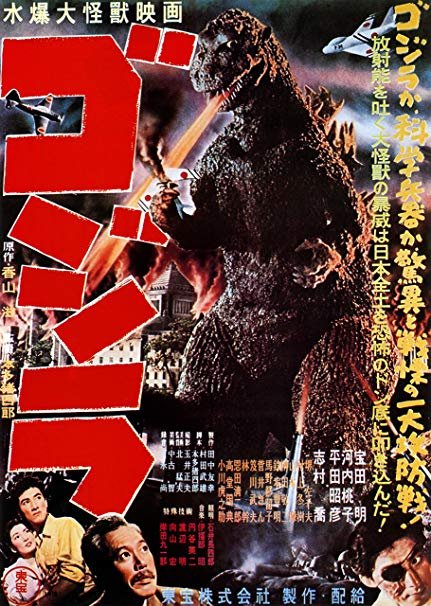
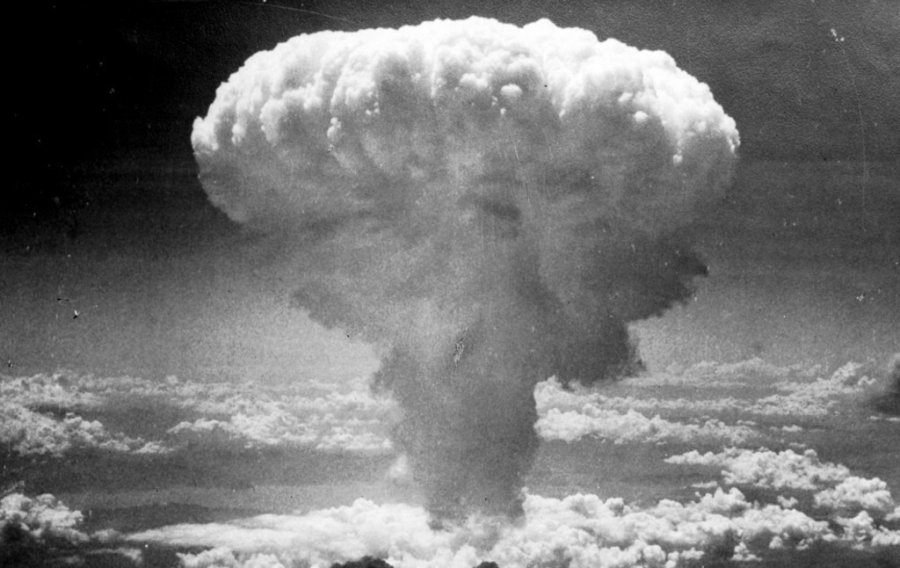

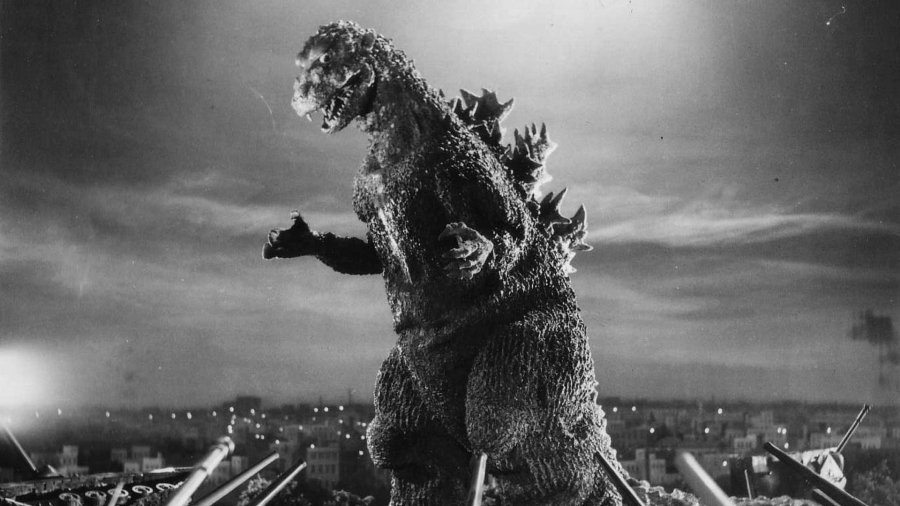

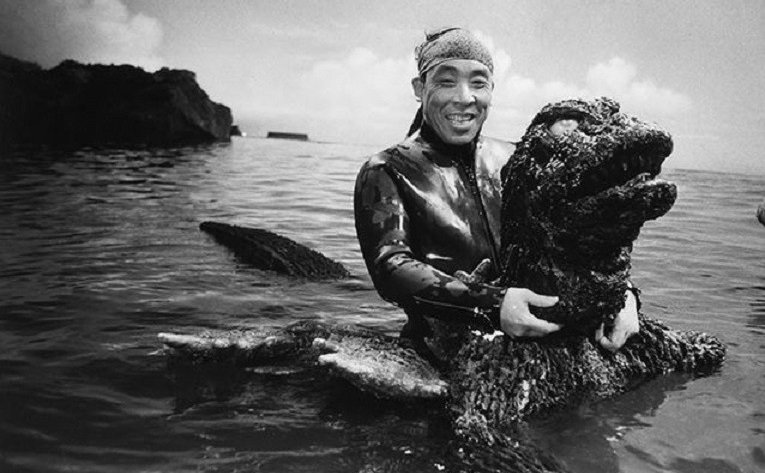
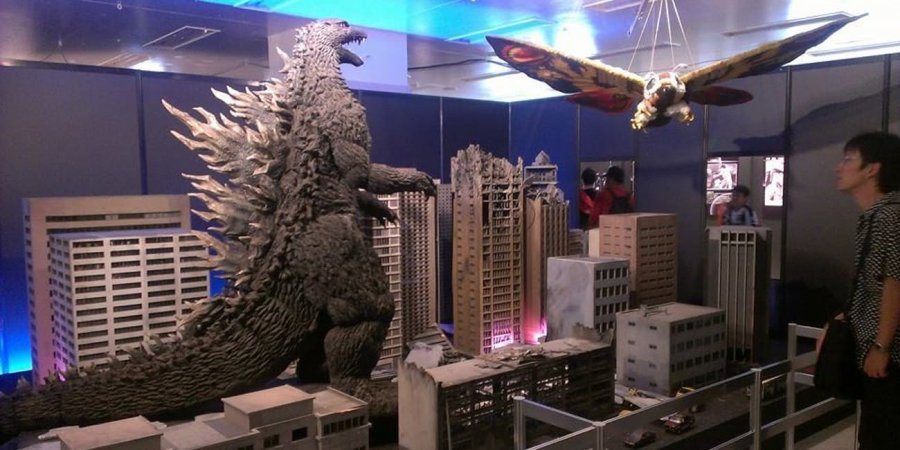



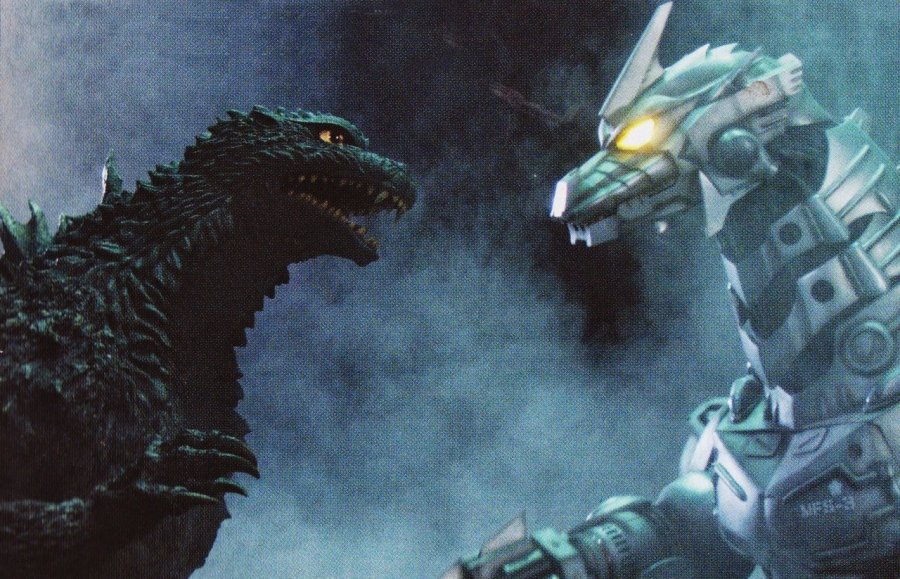





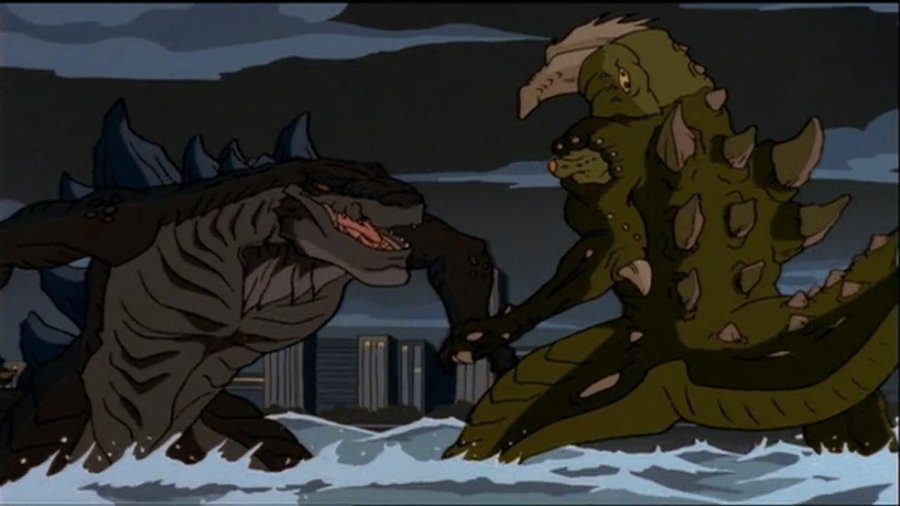
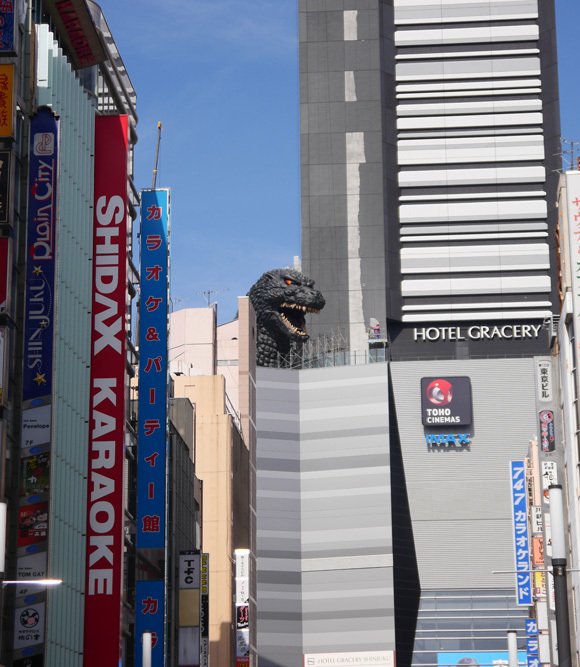
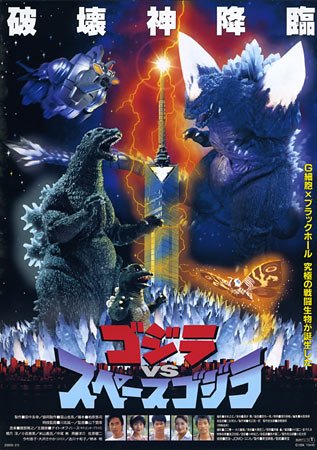
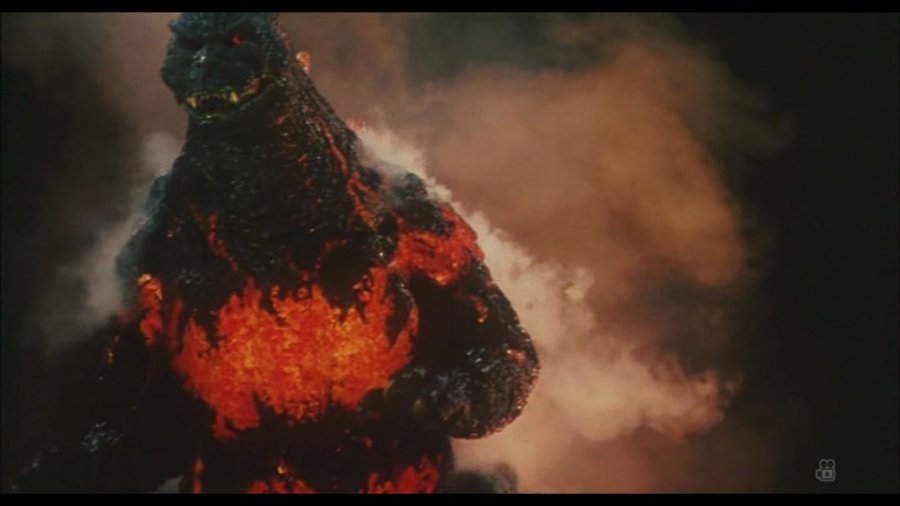
No comments:
Post a Comment
Comment moderation is switched on due to recent spam postings.